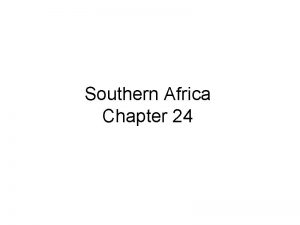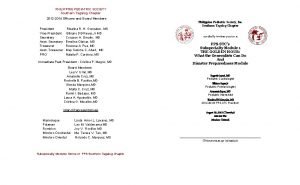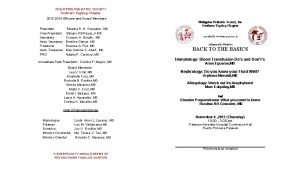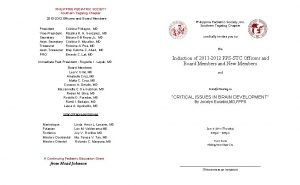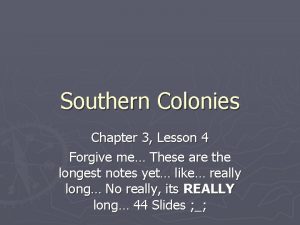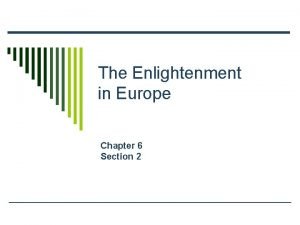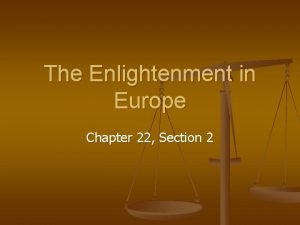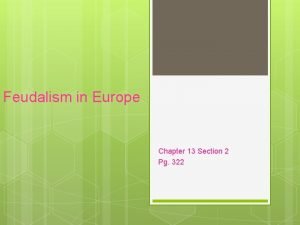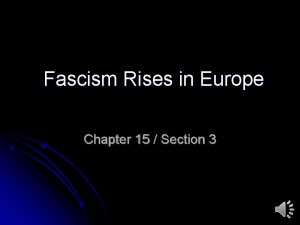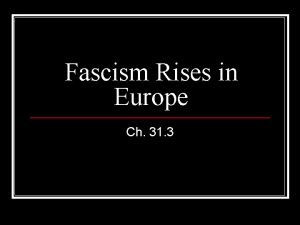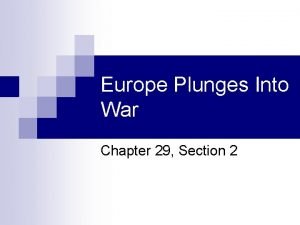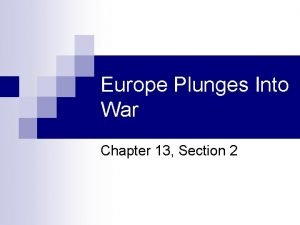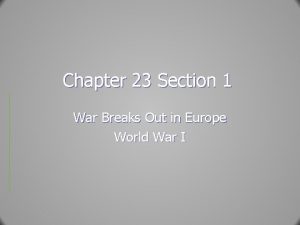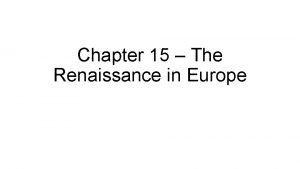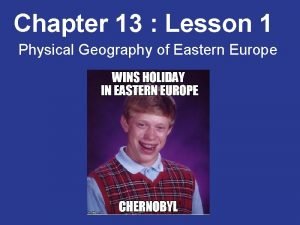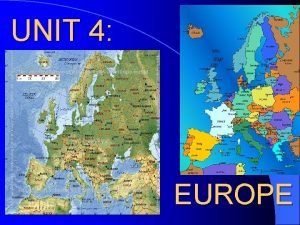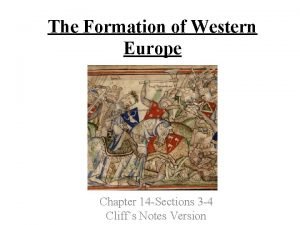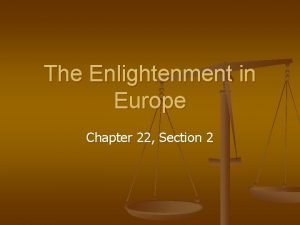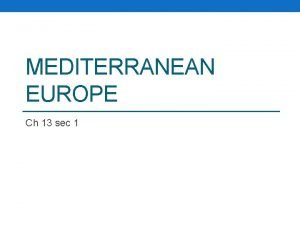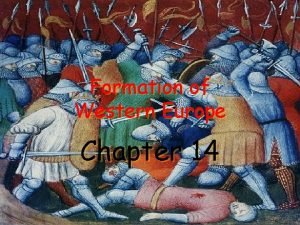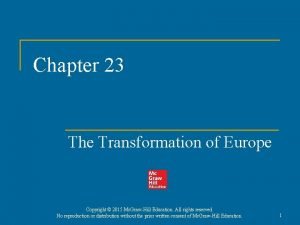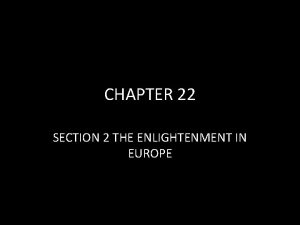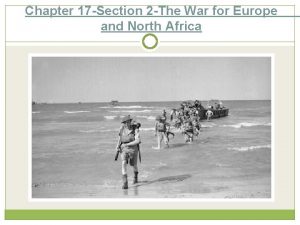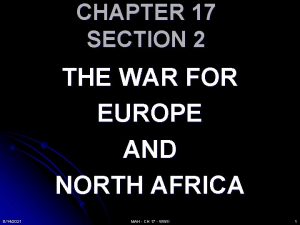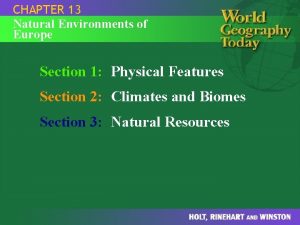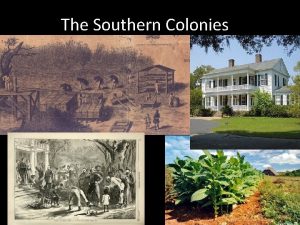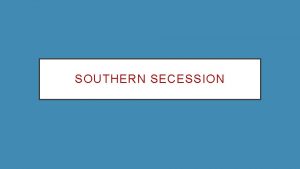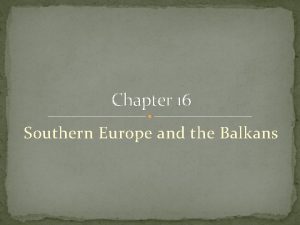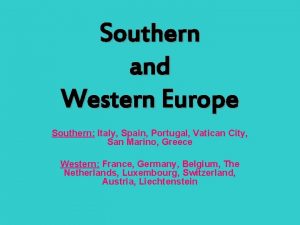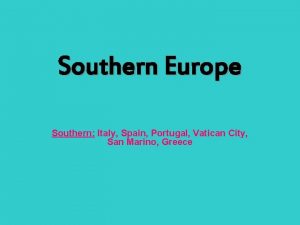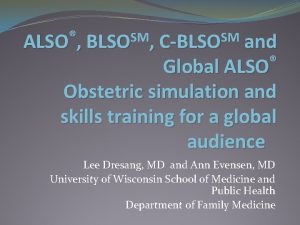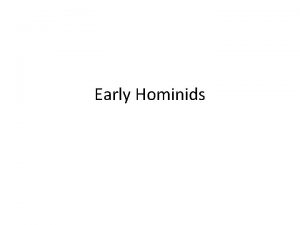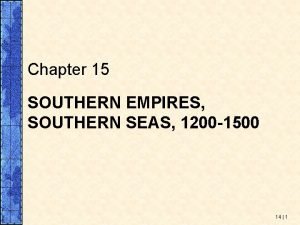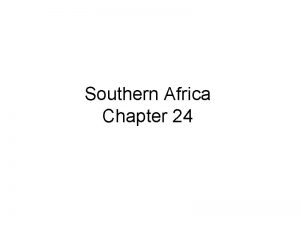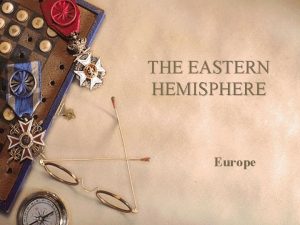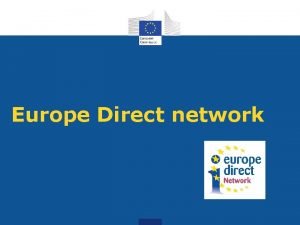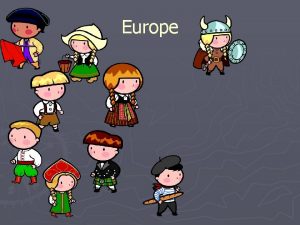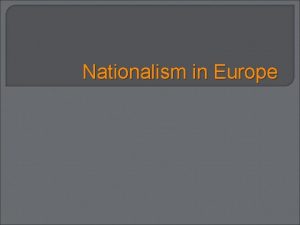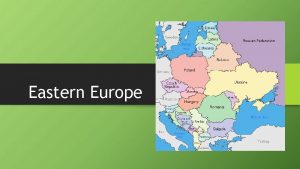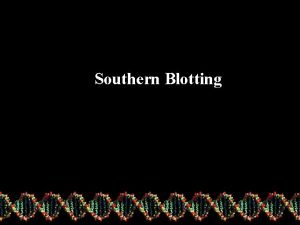Southern Europe Chapter 12 Southern Europe is also



























- Slides: 27

Southern Europe Chapter 12

Southern Europe is also called Mediterranean Europe Iberian Peninsula Italian Peninsula Balkan Peninsula

Physical Features • Islands such as Crete and Sicily • Peninsulas • Rugged mountains such as the Pyrenees and Alps • Coastal plains • River valley plains • Seas such as the Adriatic

• Mediterranean climate • Warm sunny days, mild nights • Rain in the winter, little rain in the summer

Industries of Southern Europe • Agriculture – Crops such as citrus fruits, olives, wheat, and many other products • Fishing – Fish and shellfish • Tourism – Sunny beaches, breathtaking scenery

Greece: The Birthplace of Western Culture • Ancient Greeks were pioneers in – – – Art Building Literature Science Developed democracy • As a result of Alexander the Great, Greek culture spread through Egypt and much of Southeast Asia • http: //youtu. be/Yp. Kl. UIDf 4 o. Y

History of Greece • Foreign Rulers – The Roman Empire conquered and ruled Greece – Around 400, Greece became part of the Byzantine Empire – The Muslim Ottoman Turks invaded Greece in the 1300 s and 1400 s • Independence – 1800 s Greece revolted and won their freedom – Became a monarchy – It is now a democracy

Culture • Greek language: one of the oldest languages spoken in Europe • Most Greeks belong to the Orthodox Church, a branch of Christianity • Greek cuisine consists of olives and lamb • Family is important to Greeks


Village life often centers around the villiage square where people gather to chat and make decisions.

The Greek Economy • Main industries – Shipping – Tourism • Challenges – Few mineral resources – Relatively little farmland – pollution

Italy • Italian history can be divided into three periods – Ancient Rome – The Renaissance – Unified Italy

Ancient Rome • Founded in the 700 s BC • Formed and empire that stretched from Britain to the Persian Gulf • Famous for art, literature, and political ideas • Helped spread Christianity • http: //youtu. be/ju. WYh. M o. DTN 0

Unified Italy • 1861: Italy is unified as a country • 1920 s, Mussolini takes power – Dictator – Leads Italy into WWI • Italy becomes a democracy after the war


Italy’s Culture • Roman Catholic • Pope, lives in Vatican City, an independent state within the city of Rome • Olives, tomatoes, and pasta are common • Home to some of the worlds greatest painters, sculptors, fashion designers, composers

Italy’s Regions Northern Italy • Strong economy • Fertile farmland • Major industrial cities: – Milan, Turin, Genoa • Tourist sites – Florence, Pisa, Venice Southern Italy • Poorer than the North • Depends heavily on agriculture • Beautiful beaches and ruins • Capital city: Rome



Spain and Portugal • Located on the Iberian peninsula • Once part of the Roman Empire • The Moors, Muslims from North Africa, invaded Iberia after Rome fell • They ruled the area for 600 years

Spain and Portugal • By the end of the 1400 s Christian rulers from Spain and Portugal banded together to drive the Moors from Iberia • Spain and Portugal built huge empires that included lands in Europe, Asia, Africa, and the Americas • http: //youtu. be/r. ZQG 2 b. T w. Iq. Y

Cultures of Spain and Portugal • Language: Spanish or Portuguese – The Basque people of northern Spain have their own language and customs – Many of them want independence • Religion: Roman Catholic • Music and art: Spanish flamenco – Muslim influence in architecture • http: //youtu. be/XNhf. V_53 W 7 A


Spain and Portugal Today • Once the wealthiest countries in Europe – Due to gold and silver from the Americas – Result: They did not develop industrial economies – As colonies became independent, their source of wealth dried up – They were unable to compete and became poor • Today their economies are growing rapidly

Portugal Today • Republic with elected leaders • Lisbon is the capitol and largest city • Agriculture is still important to the economy • Portuguese farmers are famous for growing grapes and cork

Spain Today • Spain is a parliamentary monarchy • Manufacturing is a major economic activity • Madrid and Barcelona are centers of industry, tourism, and commerce

Visual Summary
 Landforms in southern europe
Landforms in southern europe Chapter 24 southern africa
Chapter 24 southern africa Pps southern tagalog chapter
Pps southern tagalog chapter Pps southern tagalog chapter
Pps southern tagalog chapter Pps southern tagalog chapter
Pps southern tagalog chapter Chapter 3 lesson 4 the southern colonies
Chapter 3 lesson 4 the southern colonies Chapter 6 section 2 the enlightenment in europe
Chapter 6 section 2 the enlightenment in europe Chapter 22 the enlightenment in europe
Chapter 22 the enlightenment in europe Chapter 13 section 2 feudalism in europe
Chapter 13 section 2 feudalism in europe Chapter 15 section 3 fascism rises in europe answer key
Chapter 15 section 3 fascism rises in europe answer key Struggle ch 31
Struggle ch 31 Chapter 29 section 2 war consumes europe
Chapter 29 section 2 war consumes europe Chapter 13 section 2 europe plunges into war answer key
Chapter 13 section 2 europe plunges into war answer key Vocabulary activity 12 cultural geography of europe
Vocabulary activity 12 cultural geography of europe War breaks out in europe worksheet answers
War breaks out in europe worksheet answers Chapter 15 lesson 1 the italian states
Chapter 15 lesson 1 the italian states How do mountains and plains define eastern europe?
How do mountains and plains define eastern europe? Chapter 13 natural environments of europe
Chapter 13 natural environments of europe Chapter 14 the formation of western europe
Chapter 14 the formation of western europe Chapter 22 section 2 the enlightenment in europe
Chapter 22 section 2 the enlightenment in europe Chapter 13 section 1 mediterranean europe
Chapter 13 section 1 mediterranean europe Chapter 14 the formation of western europe
Chapter 14 the formation of western europe Chapter 23 the transformation of europe
Chapter 23 the transformation of europe Chapter 22 section 2 the enlightenment in europe
Chapter 22 section 2 the enlightenment in europe Chapter 17 section 2 the war for europe and north africa
Chapter 17 section 2 the war for europe and north africa Chapter 17 section 2 the war for europe and north africa
Chapter 17 section 2 the war for europe and north africa Chapter 13 natural environments of europe
Chapter 13 natural environments of europe Chapter 13 human geography of europe
Chapter 13 human geography of europe

